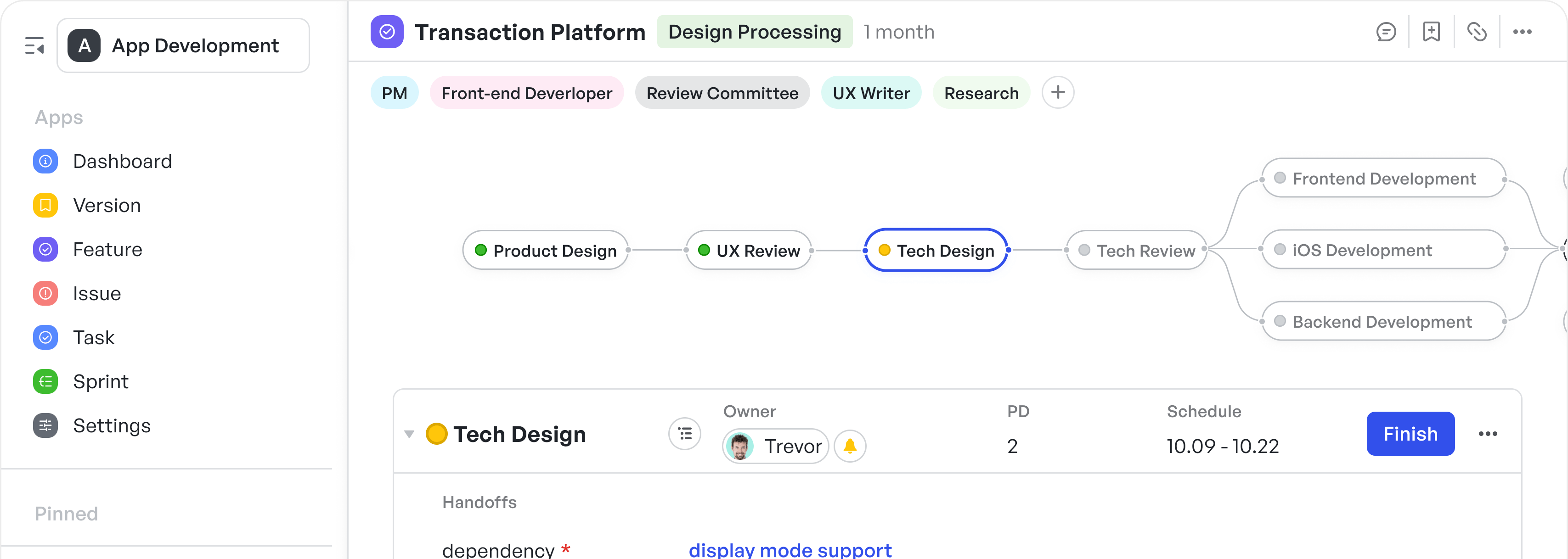How to Implement Test-Driven Development in Telecommunications: Enhancing Quality and Efficiency

In the fast-paced world of telecommunications, ensuring high-quality software and network reliability is crucial. With increasing competition, customer expectations, and the need for innovation, adopting modern software development practices has become a priority for telecommunications companies.
Test-driven development (TDD) is one such practice that can revolutionize the way telecommunications companies build, test, and deploy their software solutions.
Test-driven development is a software development approach that prioritizes testing throughout the development process. By writing tests before coding, telecommunications companies can reduce bugs, improve the stability of their applications, and accelerate the development cycle.
In this blog post, we’ll explore the benefits of test-driven development in telecommunications, how it fits into telecommunications software projects, and how it can help streamline development processes while ensuring the reliability of critical services.
What is Test-Driven Development in Telecommunications?
Test-driven development in telecommunications is a software development methodology where engineers write automated tests before implementing the actual network functions, protocols, or telecommunications systems. This approach is particularly valuable in telecom due to the industry's stringent reliability, performance, and compliance requirements.
Core test-driven development processes in telecommunications are
- Write a failing test - Define expected behavior for a telecom function (like call routing, signal processing, or protocol handling)
- Write minimal code - Implement just enough to make the test pass
- Refactor - Improve code quality while maintaining functionality
- Repeat - Continue the cycle for each new feature or requirement
You may be interested in: 👉Extreme Programming Vs. Test-Driven Development
4 Reasons Why Test-Driven Development in Telecommunications is Crucial
The telecommunications industry operates with complex software systems that manage everything from billing to network management and customer-facing applications. These systems must be highly reliable, scalable, and capable of handling large amounts of data in real time.
By implementing test-driven development, telecommunications companies can benefit in the following ways:
1. Improved Software Quality
Test-driven development helps identify bugs early in the development process, allowing developers to address issues before they become larger problems. Since tests are written before the code, it ensures that software meets the requirements from the start.
This minimizes the risk of creating features that don’t align with business objectives. For telecommunications companies, this leads to fewer outages and disruptions in service, ultimately helping maintain customer trust and ensure consistent service delivery.
Here's a real-life example of improved software quality through TDD in telecommunications:
Verizon's 5G Network Slicing Implementation
When Verizon was developing their 5G network slicing capability (which allows them to create virtual, dedicated network segments for different services), they used test-driven development to ensure quality.
The challenge:
Network slicing must dynamically allocate bandwidth and prioritize traffic. For example, an autonomous vehicle slice needs ultra-low latency (under 1ms), while a streaming video slice needs high bandwidth but can tolerate slightly higher latency.
The test-driven development approach:
- Engineers first wrote tests defining exactly how the system should behave: "When an emergency services slice is requested, it must be provisioned within 100ms and guarantee 99.999% uptime"
- They wrote tests for failure scenarios: "When network congestion occurs, lower-priority slices must be throttled before affecting critical services"
- Tests verified that slices remained isolated: "Traffic from one customer's slice cannot access another customer's data"
Real impact:
Without test-driven development, Verizon might have discovered these issues during live deployment, potentially causing:
- Emergency services losing connectivity during critical moments
- Customer data breaches due to improper slice isolation
- Network-wide outages affecting millions of users
Instead, the bugs were caught in development. When they launched commercial 5G network slicing in 2021, they avoided the service disruptions that plagued some competitors who experienced outages during their initial 5G rollouts.
This directly maintained customer trust - businesses paying premium prices for dedicated 5G slices received the reliable service they expected, rather than experiencing the kind of high-profile network failures that can damage a telecom company's reputation and lead to customer churn.
2. Faster Development Cycle
Telecommunications software often requires regular updates to meet customer needs and regulatory changes. Test-driven development helps by building each iteration on a solid, tested foundation, reducing the risk of bugs during updates.
It accelerates development cycles by minimizing the time needed for debugging and rework, allowing teams to deliver new features and improvements quickly and efficiently, which is vital for keeping up with the evolving telecom industry.
3. Better Collaboration Across Teams
Test-driven development encourages collaboration by ensuring clear, upfront requirements that align all team members—developers, testers, and product managers. Immediate feedback helps developers address issues early, reducing the risk of problems becoming critical later.
This fosters a culture of continuous improvement, where teams can quickly resolve issues and ensure that all parts of the project are aligned towards common goals.
4. Scalability and Flexibility
Telecommunications networks are constantly evolving, and software must scale to support new technologies and services. Test-driven development allows companies to build software that is flexible and adaptable to future changes, ensuring it can handle advancements.
By testing code from the start, telecommunications companies can reduce the risk of introducing issues that affect large-scale deployments, keeping infrastructure scalable and ready for growth.
How Test-Driven Development in Telecommunications Fits into Software Development Projects
Telecommunications companies handle a wide variety of software applications—ranging from customer support to complex network management tools and billing platforms.
Test-driven development provides a robust framework for ensuring that all telecommunications software components are tested early and often. Here's how it integrates into the development lifecycle:
1. Network Management Systems
Telecommunications companies rely on network management systems to monitor and manage data traffic, network health, and service quality across vast networks. With test-driven development, developers can write tests that simulate real-world network conditions.
This ensures that the network management systems respond quickly and appropriately to different scenarios, maintaining optimal performance and reliability.
To enhance network management processes, consider using the telecommunications network monitoring template. It helps you track and monitor data traffic, network health, and service quality, ensuring optimal performance.
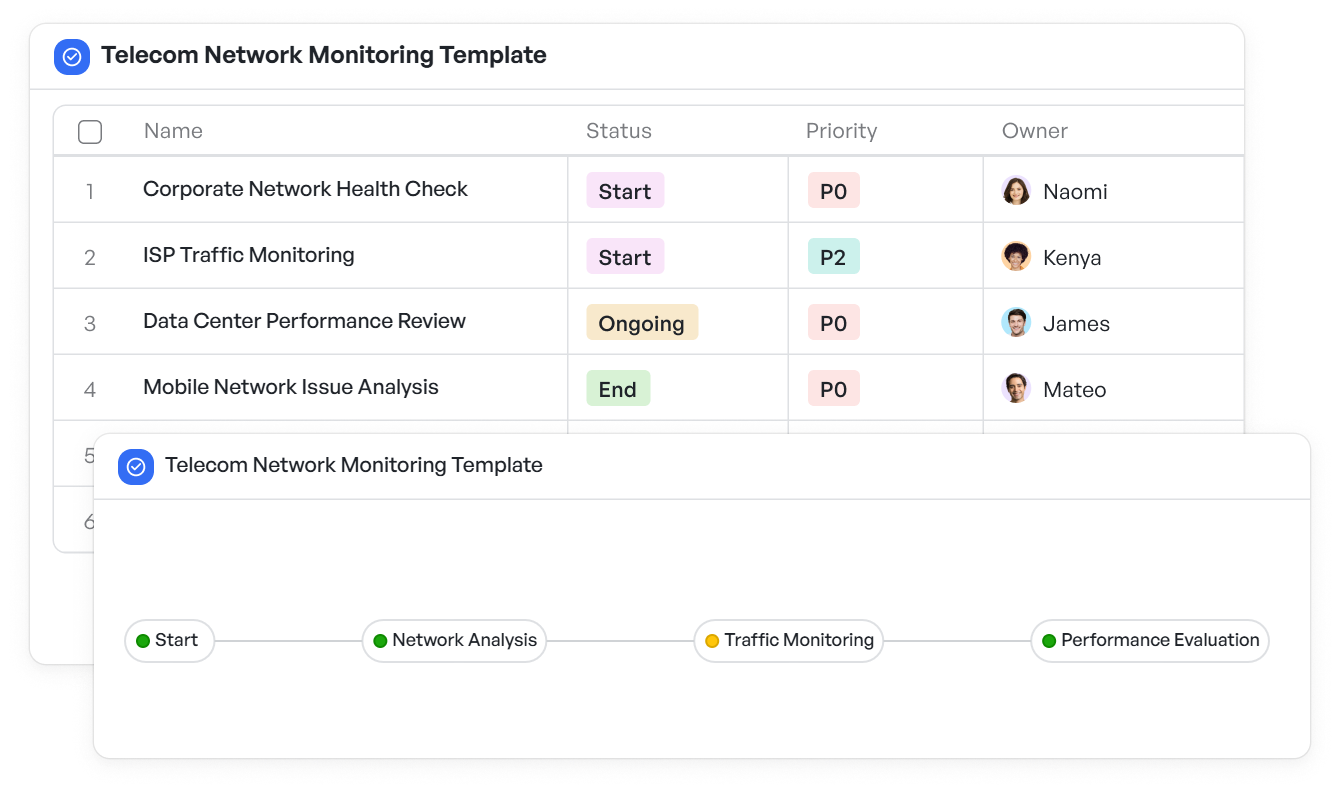 Track and monitor network performance in real time
Track and monitor network performance in real time2. Billing Systems
Telecommunications billing systems process millions of transactions, and these must remain accurate and reliable at all times. Test-driven development helps ensure that billing systems consistently calculate bills, process payments, and handle complex scenarios like international roaming charges or bundled services.
By writing tests early in the development process, telecommunications companies can avoid errors and maintain high service reliability.
For seamless integration of billing systems, the telecommunications billing system integration template can streamline the process of handling transactions, ensuring accuracy and reliability.
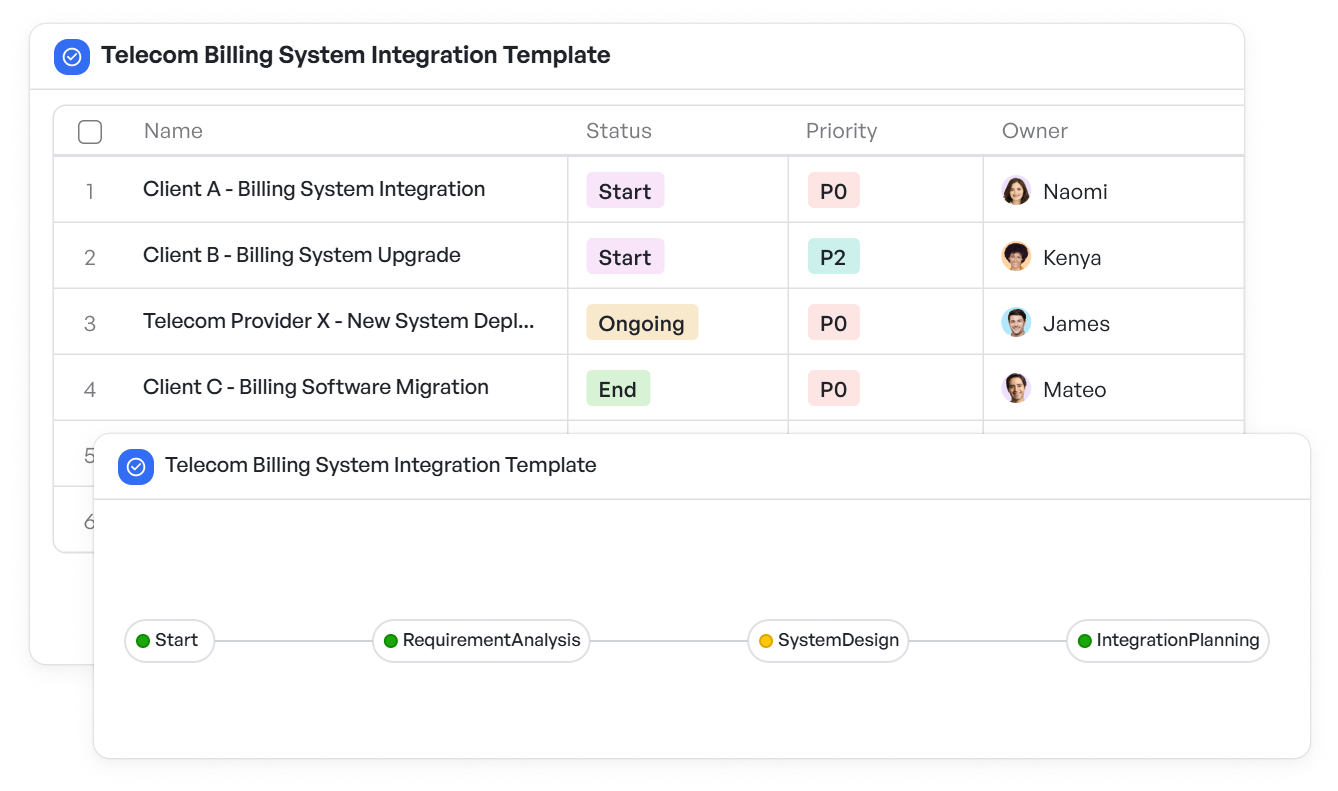 Simplify and integrate telecommunications billing systems effectively
Simplify and integrate telecommunications billing systems effectively3. Customer Support Platforms
Effective customer support is a key differentiator for telecommunications companies. With test-driven development, the development of customer support platforms can be optimized for reliability.
This approach ensures that agents have real-time access to data, and customers can resolve issues promptly. By simulating real-world support scenarios, telecommunications companies can ensure smooth operations and faster response times.
To optimize customer support processes, use the telecommunications customer support workflow template. It helps streamline support workflows and ensures that agents have real-time access to customer data, improving response times.
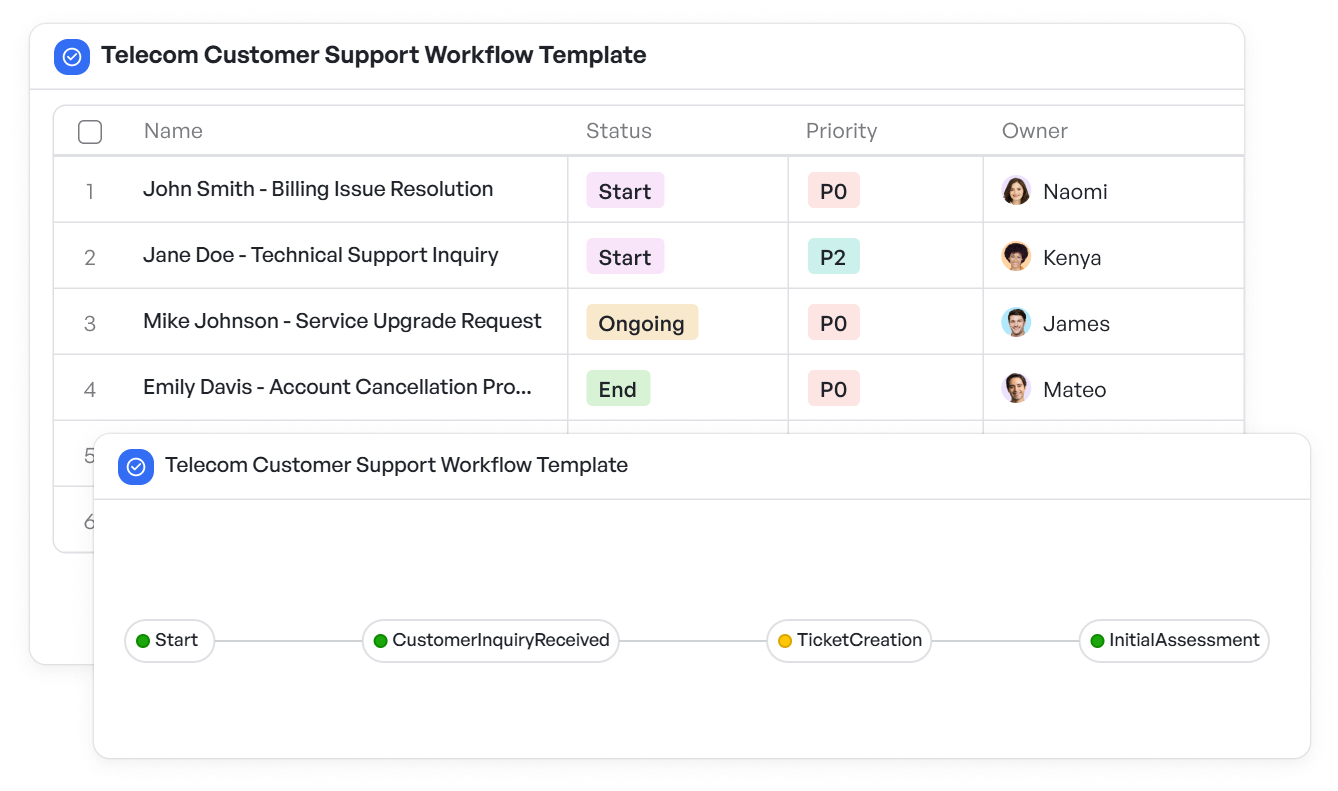 Manage and improve customer support workflows
Manage and improve customer support workflows4. Mobile Apps and Web Interfaces
Telecommunications companies often offer mobile apps and web portals to allow customers to manage their accounts, services, and billing. With test-driven development, these user-facing applications can be thoroughly tested to minimize bugs and errors.
This reduces the likelihood of user frustration due to crashes, glitches, or inconsistencies, enhancing the overall user experience and satisfaction.
Top 5 Practices to Implement Test-Driven Development in Telecommunications
Implementing test-driven development in telecommunications is a step-by-step process that requires careful planning and execution. Here are some best practices for adopting test-driven development in telecommunications projects:
1. Define Clear Requirements
Before starting any test, it's crucial to have clear and well-defined requirements. In telecommunications projects, these requirements could involve network performance, customer experience, billing accuracy, or system security.
Well-defined requirements not only align with business goals but also make it easier to write meaningful tests that address the specific needs of the project. This alignment ensures that the testing process is both relevant and effective.
2. Automate Testing
Test-driven development involves frequent testing, and automating the testing process is key to improving efficiency. By using automated testing tools, telecommunications companies can continuously run tests to identify issues immediately after code changes.
This automation reduces manual effort and ensures that any problems are detected early, helping development teams maintain high-quality code throughout the process.
The telecommunications network testing template can be used to automate testing for network-related aspects of your telecommunications software, ensuring continuous monitoring and validation of system performance.
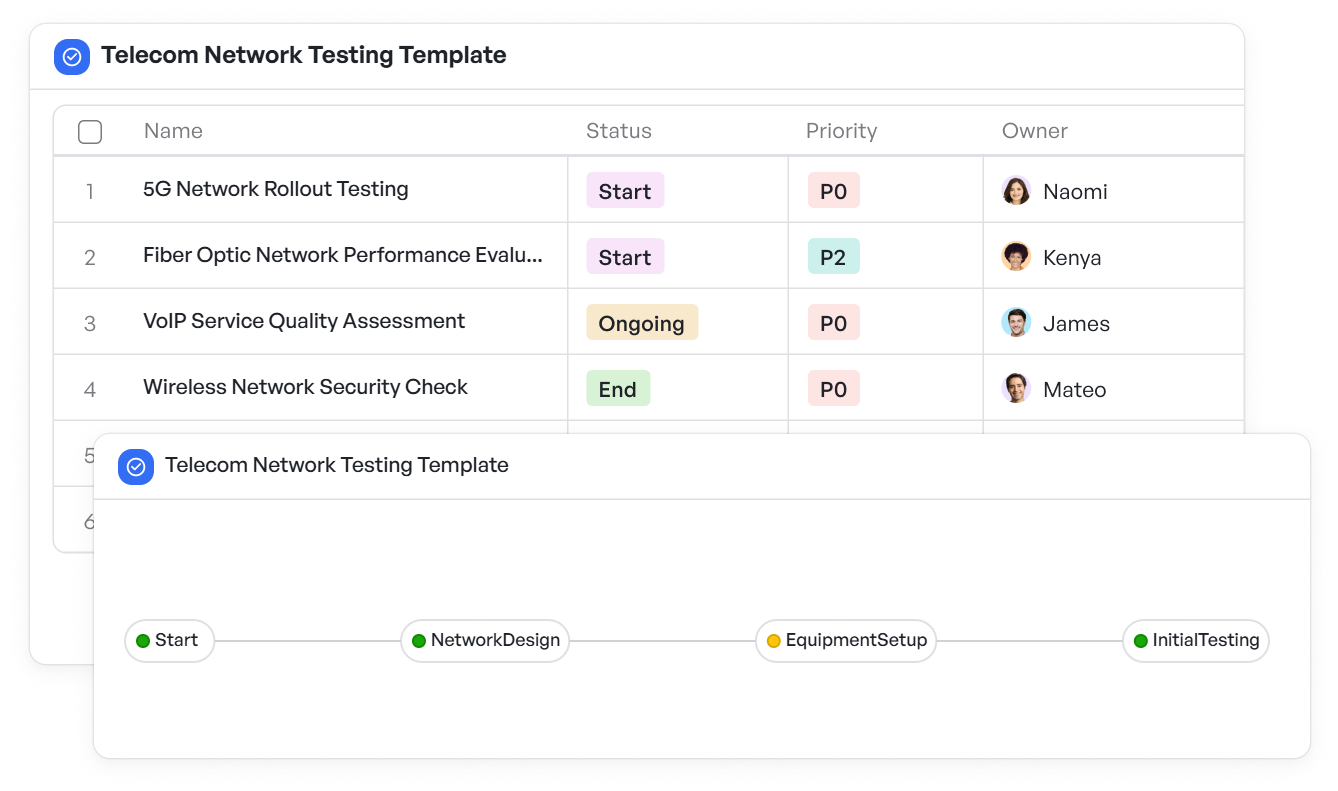 Automate network testing to ensure consistent system performance
Automate network testing to ensure consistent system performance3. Use Mocking and Stubbing
Telecommunications systems often depend on external services and systems. Mocking and stubbing techniques allow developers to simulate these external dependencies during testing, ensuring that the core system functions correctly without needing to rely on live external services.
This approach provides a controlled environment for testing, improving the reliability of the system without impacting external resources.
4. Focus on Continuous Integration
Test-driven development thrives in continuous integration (CI). By continuously integrating code and running tests, telecommunications development teams can catch issues early in the development cycle.
This approach ensures that each code change is thoroughly tested, preventing new bugs from being introduced and enabling teams to deliver updates more reliably and quickly.
5. Incorporate Test Coverage Metrics
Test coverage metrics are essential for ensuring that all code is adequately tested. In the context of telecommunications, it’s critical to cover all aspects of a system—from backend infrastructure to user-facing applications.
Using test coverage metrics helps ensure there are no critical gaps in functionality, giving telecommunication companies confidence that their software will perform as expected across all areas.
For ensuring comprehensive test coverage, use the telecommunications network capacity planning template to model network capacity and ensure that test coverage extends across all critical system components.
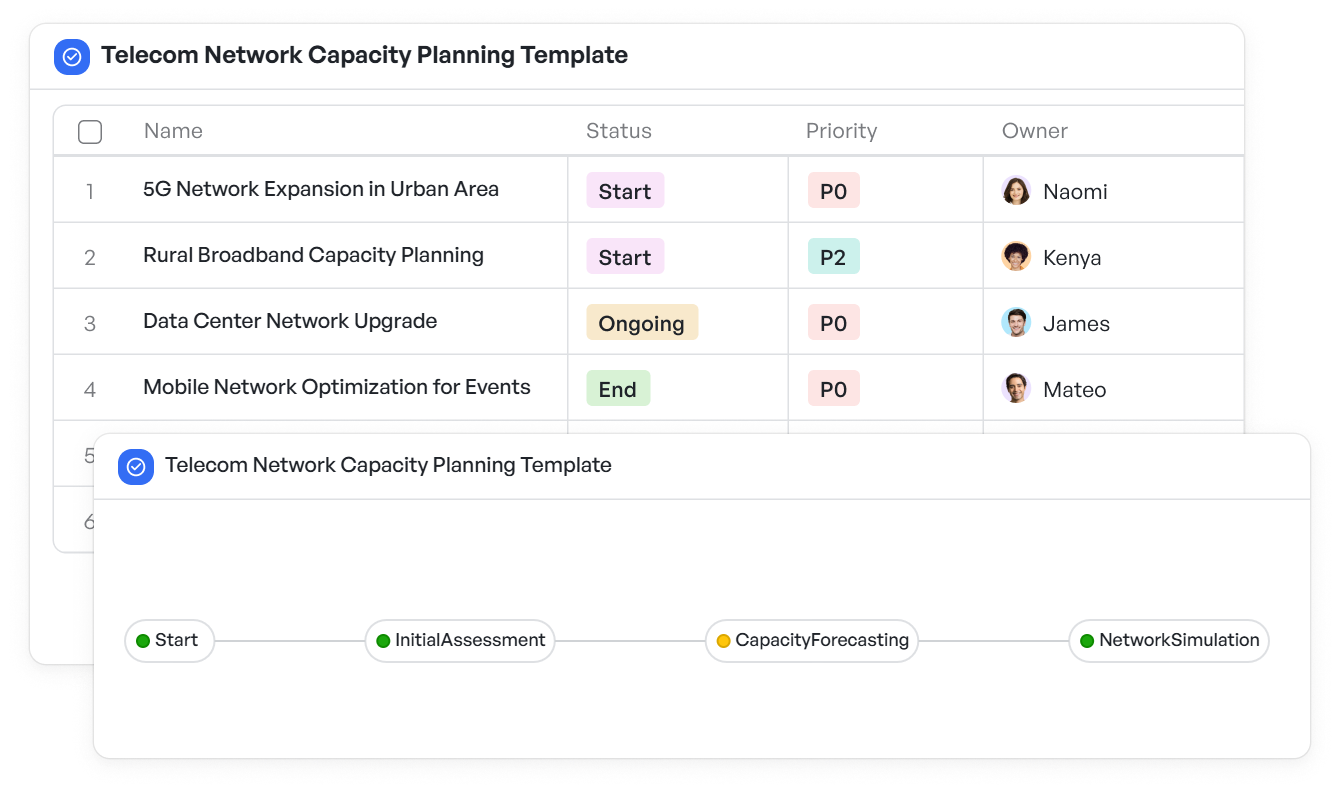 Plan and ensure full test coverage across all network components
Plan and ensure full test coverage across all network componentsThe Role of Test-Driven Development in Telecommunications Service Delivery
Test-driven development plays a crucial role in telecommunications service delivery by ensuring that network functions and services meet stringent reliability requirements before deployment.
In this methodology, engineers write automated tests first to define expected behaviors for critical telecommunications components such as call routing protocols, bandwidth allocation systems, and network security functions.
This approach is particularly valuable in telecommunications because it catches potential service disruptions during development rather than in production, where outages can affect millions of users and cost companies significant revenue.
When Verizon implemented test-driven development practices for their 5G network slicing capabilities, they were able to verify that emergency services maintained ultra-low latency and guaranteed uptime before the system went live, preventing potential failures that could have impacted critical communications.
The business impact of test-driven development in telecommunications extends beyond technical quality to directly influence customer satisfaction and operational efficiency.
Companies using this methodology report faster feature deployment cycles and reduced service-affecting incidents, as comprehensive test suites provide confidence that new updates won't break existing services.
AT&T observed a 40% reduction in unplanned service interruptions after adopting test-driven development for their network management systems, while T-Mobile accelerated their deployment schedule from monthly to weekly releases.
This improved reliability translates to enhanced customer trust and competitive advantage, as telecommunications companies can deliver innovative services without compromising the consistent performance that users expect.
Furthermore, test-driven development helps telecommunications companies meet regulatory compliance requirements by creating auditable documentation of how services perform under various conditions. The automated tests serve as evidence that companies proactively manage service quality and adhere to industry standards for network reliability and data protection.
As telecommunications networks become increasingly software-defined and complex, test-driven development provides the foundation for managing this complexity while maintaining the high-quality service delivery that modern communications infrastructure demands.
You may be interested in: 👉Debugging in feature rollouts
Unlock the Potential of Telecommunications Software with Test-Driven Development
Test-driven development offers key benefits for telecommunications companies, including improved software quality, faster development cycles, and enhanced collaboration across teams.
By adopting test-driven development, telecommunications businesses can build robust, scalable software that meets the demands of modern customers.
If you're looking to streamline your development processes and improve software reliability, implementing test-driven development is a smart step forward.
Optimize test-driven development in telecommunications with visual workflows that improve quality and speed at scale.
The world’s #1 visualized project management tool
Powered by the next gen visual workflow engineRead More
Check All BlogsStart creating impactful work today
